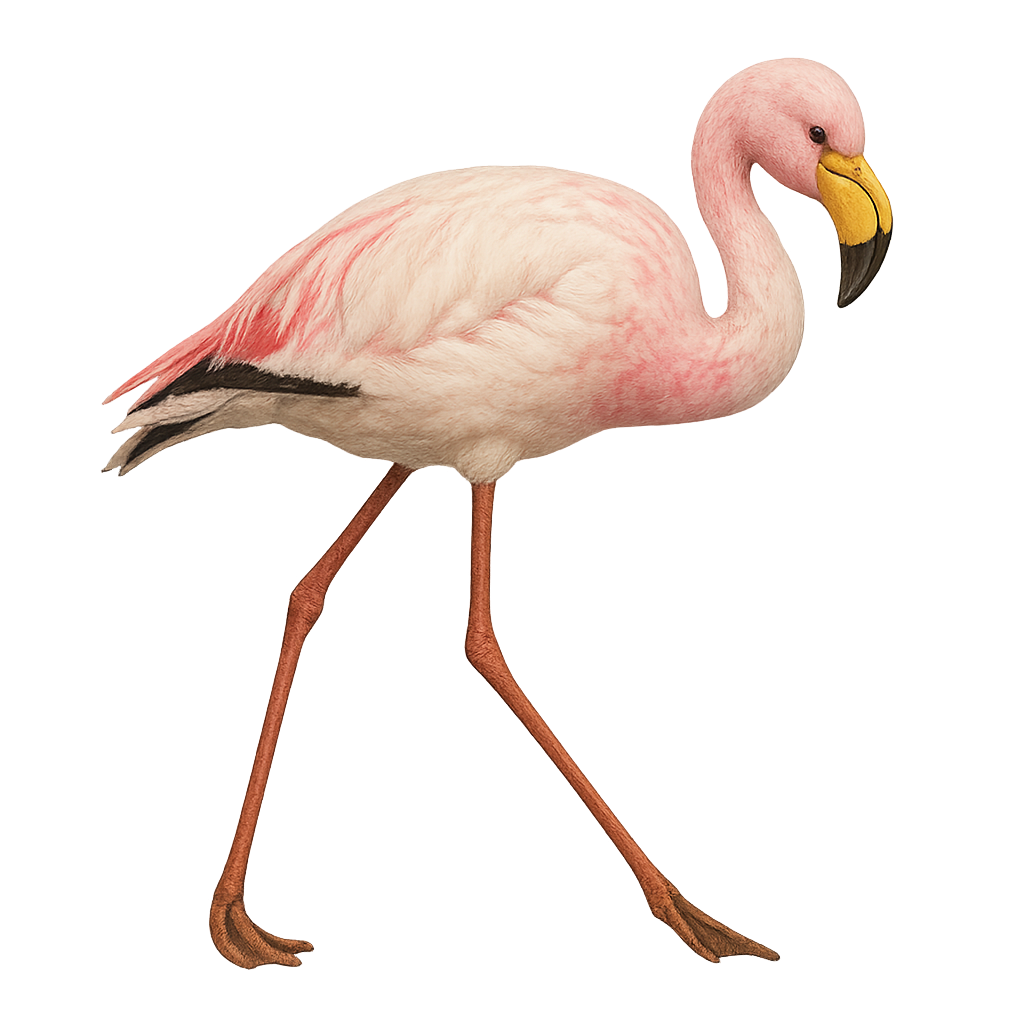Your wildlife photography guide.
Explore the james's flamingo in detail, study its behavior, prepare your shots.
Where to observe and photograph the james's flamingo in the wild
Learn where and when to spot the james's flamingo in the wild, how to identify the species based on distinctive features, and what natural environments it inhabits. The WildlifePhotographer app offers tailored photography tips that reflect the james's flamingo’s behavior, helping you capture better wildlife images. Explore the full species profile for key information including description, habitat, active periods, and approach techniques.
James's Flamingo
Scientific name: Phoenicoparrus jamesi

IUCN Status: Near Threatened
Family: PHOENICOPTERIDAE
Group: Birds
Sensitivity to human approach: Suspicious
Minimum approach distance: 30 m
Courtship display: December to February
Incubation: 27-29 jours
Hatchings: December to March
Habitat:
Saline lakes, alkaline marshes, Andean lagoons
Activity period :
Primarily active during the day, with peak activity in the morning and late afternoon.
Identification and description:
The James's Flamingo, or Phoenicoparrus jamesi, is an elegant and graceful bird primarily found in the high Andean plateaus of South America. It is recognizable by its pale pink plumage, red legs, and yellow bill with a black tip. This flamingo prefers saline and alkaline lakes, often located at high altitudes, where it feeds mainly on algae and small crustaceans. Although less known than other flamingo species, the James's Flamingo plays a crucial role in its ecosystem by helping regulate populations of aquatic microorganisms. Unfortunately, this species is threatened by habitat loss and human disturbances, making its conservation essential.
Recommended lens:
400mm – adjust based on distance, desired framing (portrait or habitat), and approach conditions.
Photography tips:
To photograph the James's Flamingo, it is advisable to use a telephoto lens of at least 400mm to capture detailed images without disturbing the bird. The best photos are often taken early in the morning or late in the afternoon when the light is soft and golden. Look for compositions that include the bird's reflection in the water to add an artistic dimension to your shots. Be patient and wait for the flamingo to adopt an interesting posture or interact with other members of its group.
The WildlifePhotographer App is coming soon!
Be the first to explore the best nature spots, track rutting seasons, log your observations, and observe more wildlife.
Already 1 432 wildlife lovers subscribed worldwide

